In venturing into new genus / species of fabulous plants, I am needing information on the Calochortus genus. I live in Utah, USA, where the state flower is Calochortus nuttalli. I'd really like to grow any Calochortus since I haven't seen any that are distasteful ;) I generally grow my alpines in troughs but we do have a dry garden as well. Amendind the soil to fit the needs of the plant would not be difficult at all.
I'm rather optimistic asking in the NARGS Forum about an easy specie(s) to start with either by seed or by bulb. Any info would be greatly appreciated!
Thanks!
James
Comments
Re: Advice On Growing Calochortus sp.
I don't know a thing about Calochortus spp., but I did find this.
Scanned from the 1990 winter Buletin of the American Rock Garden Society (the NARGS Rock Garden Quarterly predecessor):
"Calochortus: Why Not Try Them?" by Boyd Kline
Re: Advice On Growing Calochortus sp.
Panayoti Kelaidis posted some information on Calochortus, with some fine photos. Just enter 'calochortus' in the search box above, and you'll be taken to his posts.
Re: Advice On Growing Calochortus sp.
Late to the thread; some basic info here:
http://www.pacificbulbsociety.org/pbswiki/index.php/HowToGrowCalochortus
Re: Advice On Growing Calochortus sp.
The PBS site is always informative. Thanks, (Mark?) Mazer.
And welcome to the Forum!
Re: Advice On Growing Calochortus sp.
I've been absent from the Forum for quite a while (for many reasons) and am about to be on vacation for a few weeks--and don't know how much computer access I may have--BUT, I cannot resist sharing about Calochortus: I have had pretty wonderful success the last six or seven years: I scattered seed of Calochortus gunnisonii, and literally dozens started to bloom only a few years out, and these now are self sowing. I have added hundreds of bulbs grown by the Dutch (they have seven or so strains in commerce): they are very reasonable if you shop around. I have probably planted over a thousand so far, and these too are self sowing. I have been so pleased with the success (many mariposas have clumped up over the last few years, producing dozens of blooms from a single clump) and they last most of the month of June. I am growing them in a sandy loam (basically my native soil) which is very deep and bakes hard in summer. I do water them in spring if we get insufficient snow or rain (not needed the last few years). I watered them this autumn because we have had essentially no rain since June and the soil was rock hard when I planted nearly 20 new kinds I got from Telos and Western Native bulbs: I have over 25 taxa. The Dutch ones must be seed grown because they are extremely variable. When they are in bloom I throw several parties, and visitors are very envious. You should have great success with these in Utah!
Re: Advice On Growing Calochortus sp.
Bought a mix from McLure & Zimmerman last fall. Bulbs were very small; but most have survived and half or more will bloom this year.
Planted in a fairly barren sand bed 15 to 20 inches over clay soil. Winter had a good snow cover. This is a cactus area of the garden that I won't water, though water is never a problem for long here
Next year will be a test, though I have one (possibly c.v. Cupido) from {don't recall) that is a year older and has increased and flowered last year and this.
Will sow seeds though, at least, some of the tulips definitely don't need and assistance there--having come up like onions this spring.
The Timber Press book indicates that there are a fair number of species that naturally have some summer moisture.
Charles Swanson NE Massachusetts USA
Re: Advice On Growing Calochortus sp.
I started seed of 6 species in 2006: Calochortus barbatus, C. longebarbatus, C. luteus, C. subalpinus, C. vestae and C. striatus and planted the seedlings in two places - on a bed outside with good drainage (covering the plants with a slate in winter to keep relatively dry) and in my greenhouse (no winter moisture apart from what comes up from below). If I haven't mixed things up, one of those outside is still alive (C. longebarbatus) and one in the greenhouse (C. striatus). Good to have confirmed above that it can take 5-7 years to flower as they have grown slowly. This is an area where rainfall can be expected all summer (several days in a row). Are my survivors species that might be expected to tolerate wet summers?
Re: Advice On Growing Calochortus sp.
Stephen, I don't know enough about these to offer much help, except to say that about 6-7 years ago I bought a few young bulbs of Calochortus vestae from Jane McGary, opting to try that species as it was rumored to be tolerant of more moisture and shade than many of the others; not sure how true that it. Each year the foliage gets larger, in fact they looked so good this spring I thought they might finally flower, but no such luck. Here's the foliage near the end of April 2011... mice succulent leaves.
Re: Advice On Growing Calochortus sp.
Mine don't look that big - another 5 year wait then, but it will be worth it!! Looks like your label has been nibbled by mice ;)
Re: Advice On Growing Calochortus sp.
Looks like your label has been nibbled by mice ;)
Last time I bought plant labels at wholesale volume, I bought two types... one is a flexible vinyl type that stays flexible for years, they never become brittle, lasting for two decades, and I tried a new type of label made with a different type of plastic, and these are terrible... they become brittle in just one year and snap off at the slightest touch, particularly in cold or frozen temperatures. The varmints prefer to nibble on actual plants rather than labels ;)
Re: Advice On Growing Calochortus sp.
Here are a couple of sights with great photos of Calochortus to tempt you.
the first is by Mary Gerritsen the author of Calochortus: Mariposa lilies & their relatives
http://www.flickr.com/photos/venustus/
The second is from Gary Monroe an armature photographer, who's many photos you will see on the USDA Plants Data Base, and CalPhotos sights.
http://www.flickr.com/photos/gamonroe38/sets/72157624403990865/
Re: Advice On Growing Calochortus sp.
Here are a couple of sights with great photos of Calochortus to tempt you.
the first is by Mary Gerritsen the author of Calochortus: Mariposa lilies & their relativeshttp://www.flickr.com/photos/venustus/
The second is from Gary Monroe an armature photographer, who's many photos you will see on the USDA Plants Data Base, and CalPhotos sights.
http://www.flickr.com/photos/gamonroe38/sets/72157624403990865/
OMG John, I'm never going to get anything done today if you keep posting links to such amazing eye-candy ;). Calochortus is surely among the most beautiful and amazing plants of all, I could never tire of looking at them.
Re: Advice On Growing Calochortus sp.
It'll just take a couple of more hours to look at these. You couldn't have anything more pressing to do, could you? ;D
Re: Advice On Growing Calochortus sp.
I have never succeeded with any mariposa :(
Re: Advice On Growing Calochortus sp.
Trond
They are a picky bunch. I have had failures with many of them also. ???
Re: Advice On Growing Calochortus sp.
Well, I intend to try more but they are put on hold for a while!
Re: Advice On Growing Calochortus sp.
I think this might be legible. (It does refer just to the winter-dormant hardy species.)
Bob
Re: Advice On Growing Calochortus sp.
Bob
That is a very cool letter!!! 8) Thank you for sharing it.
Re: Advice On Growing Calochortus sp.
What a wonderful keepsake, Bob. Many, including my wife, would have disposed of it years ago.
I, on the other hand, would have treasured it for what it is ... a slice of botanical history.
At our group meetings of the East Lancashire AGS we always ask our lecturers to sign the admissions book and we now have a remarkable collection of 250 signatures from the great, the very much still alive and the very sadly long departed.
Duncan Lowe, George Smith, Frank Tindall and Wilf Kirby spring to mind from the late lamented department.
Imagine if the group had been formed earlier ... Roy, Jack and Joe Elliott, Will Ingwersen, Linc Foster, Reginald Farrer ... the possibilities are endless. :D
Re: Advice On Growing Calochortus sp.
I save little things like notes from Jim Archibald on seed packets, and I think I still have one of Vaclav Plestil's seed packets made out of cigarette rolling paper.
Bob
Re: Advice On Growing Calochortus sp.
What a wonderful keepsake, Bob. Many, including my wife, would have disposed of it years ago.
I, on the other hand, would have treasured it for what it is ... a slice of botanical history.
I had some wonderful keepsakes... such as many letters between myself and Timmy Foster, with some input from Linc (but mostly Timmy), when I was working on some NARGS (ARGS at the time) bulletin articles (mid 1980s). There was candid commentary relative to the naming of the double green-flowered Anemonella thalictroides; whether it should be Green Dragon or Jade Feather... I had the proof that Jade Feather was the decided upon name... but I no longer have it... subsequently 3 decades later 4 different interchangeable names now get used for the one plant! I believe my letters fell victim to a couple home moves (cross-country), and being in a home where the basement flooded and lots of boxes filled with my papers and books were badly water-damaged. Bob, your keepsake is wonderful, and now posted to NARGS Forum at large size that's easy to read, it's available to everyone; thanks for posting.
Re: Advice On Growing Calochortus sp.
I think this might be legible. (It does refer just to the winter-dormant hardy species.)
Bob
No way I can make such species grow here, at least not in the garden :-\
Re: Advice On Growing Calochortus sp.
The majority of winter-hardy calochortus get rain in the spring, occasional rain in summer, and none at all in the winter. Not exactly the easiest conditions to duplicate.
Winters in my garden are generally bone-dry, either with snow cover (which I detest) or without, which, fortunately for my mood, is the more common event.
I remember when we went to Oregon one year, we were told to bring our raincoats. No one had ever said that to me before. A raincoat? What on earth for? I don't even own one. (I have an umbrella, but it won't open.)
Bob


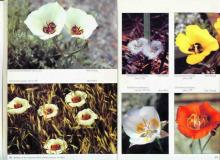


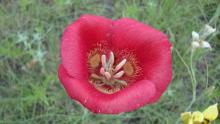
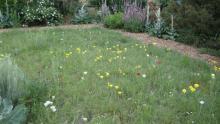
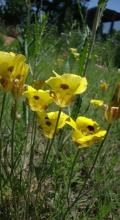
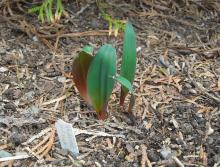
Hi James,
I can only point you in the direction of this fabulous monograph ...
http://books.google.co.uk/books?id=gEY49Gqe2VgC&dq=calochortus&printsec=...